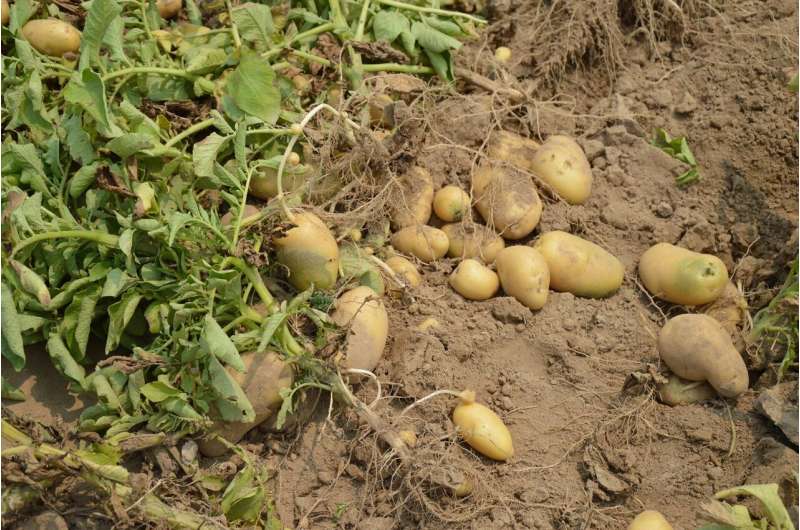This article has been reviewed according to Science X's editorial process and policies. Editors have highlighted the following attributes while ensuring the content's credibility:
fact-checked
trusted source
proofread
Unraveling the origin and global spread of the potato blight pathogen

A new study challenges the common theory that the devastating potato blight pathogen Phytophthora infestans originated in Mexico. Researchers meticulously reconstructed its global migration history and found it likely originated in the South American Andes before spreading globally. This research provides significant insights into the pathogen's evolutionary journey, which is crucial for developing better disease management strategies worldwide.
P. infestans is infamous for causing the Irish potato famine in the 19th century, yet it remains a major threat to potato crops globally. Understanding its migration and genetic diversity is key to combating its spread. Focusing on tracing the pathogen's migration towards Colombia, the researchers used advanced statistical methods to reconstruct the likely migration routes by analyzing genotypic data from 1,706 isolates collected worldwide.
The study proposes that P. infestans originated in Peru before migrating north to Colombia and Mexico and then spreading to the United States, Europe, and Asia. This contrasts with earlier theories suggesting a Mexican origin followed by spread to South America. Interestingly, the study found no evidence of the pathogen returning to northern South America after these migrations.
"Even though the current Colombian population originated from Peru, the apparent lack of repeated introductions from neighboring countries suggests internal migrations might be more prevalent," said Camilo Patarroyo, first author of the study recently published in Phytopathology. "This should be carefully monitored to prevent the spread of new variants that could complicate disease control."
The study also emphasized the importance of international collaboration in tracking and managing P. infestans. The research underscores the necessity of global cooperation in tackling plant pathogens, with organizations like EuroBlight, USABlight, and Tizón Latino playing vital roles.
One of the standout findings was the strong geographic signal observed in the pathogen's genetic data, supporting the hypothesis of rare, significant migration events rather than continuous, small-scale movements. This insight is crucial for developing targeted control measures that focus on preventing these rare but impactful migrations.
By understanding the historical migration patterns of P. infestans, scientists and farmers can better predict and prevent future outbreaks. This knowledge also aids in breeding more resistant potato varieties, ultimately contributing to global food security.
Silvia Restrepo, lead author of the study and president of the Boyce Thompson Institute, highlighted the broader impact, stating, "Our work not only unravels the past migrations of P. infestans but also provides a framework for predicting its future movements. This is essential for global efforts to safeguard potato crops against this persistent threat."
This research demonstrates how historical data combined with modern genetic analysis can illuminate the pathways of one of agriculture's most notorious pathogens. The findings pave the way for improved disease management strategies, ensuring a more secure future for potato cultivation worldwide.
More information: Camilo Patarroyo et al, Reconstructing the global migration history of Phytophthora infestans towards Colombia, Phytopathology (2024). DOI: 10.1094/PHYTO-05-24-0163-R
Provided by Boyce Thompson Institute





















